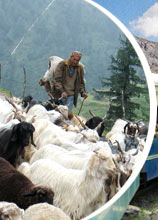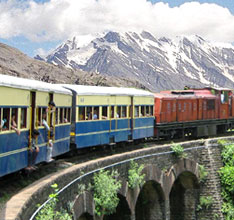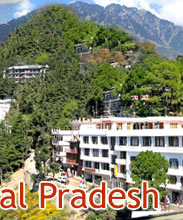In the history of Himachal Pradesh, one finds a
mention of the Gurkha rulers also. Gurkhas gained control over some
princely states of Himachal and ruled them until 1815, when British
drove them away from the region. Gurkha forts and castles are
reminiscent of their regime and form an important part of the
architectural heritage of the state. One can still find these monuments,
some still standing strong and some in ruins, in Bilaspur, Shimla,
Sirmour and Solan districts, as evidences of Gurkha presence in the
region.
Dhar Mountain Fort
Situated on top of Dhar Mountain, at an altitude of about 7000 ft above
the sea level, Dhar Mountain Fort now stands mostly in ruins. It is
about 200 years old and was built to commemorate the victory of Gurkhas
over the state of Bhagat. The main entrance of the fort faces east and
leads to a gallery-like hall, with a water tank in the center. The upper
storey has a very low ceiling, which was meant to allow the soldiers to
fight the enemies in a crawling position while being protected against
them. To the east of the third hall is a dark oval shaped room.
Malaon Castle
Malaon Castle, built by Amar Singh Thapa, is situated near Nalagarh, in
Solan district. He built it as he advanced to expand his territory into
the western hill states. In 1915, his Major General, Bhakti Thapa, was
killed and defeated at the hands of the British Army, led by Major
General David Ochterlony. The Major then forced Amar Singh Thapa to
leave Ramgarh Fort and find a sanctuary at Malaon Castle.
Gurkha Fort of Banasar
Another Gurkha Fort is situated near the village of Banasar, situated
at a distance of 22 km from the Kalka-Shimla National Highway. The
Gurkha Fort of Banasar is more than 150 years old.
Gurkha Fort of Subathu
Gurkha Fort of Subathu is approximately 70 km from Malaon. One of its
most popular attractions comprise of the cannons that were once used at
Malaon Fort. These cannons are more than 180 years old and are now used
by the 14 Gurkha Training Center of the Indian Army.








